Review for Un-Go (US)
Introduction
Let’s try this again. A few years ago, Kazé released Un-Go in the UK on Blu-ray/DVD combo, and it fell to me to review. Only when I tried the Blu-ray, it turned out that it just didn’t work on Panasonic machines. As for the DVDs, they were just as Kazé’d as all their other DVDs, stripped of extras, locked tight during playback, and with screwy subtitles. I wound up passing on Un-go in the end, despite the fact that I was quite taken with it when it was streamed here on Anime on Demand. After all it did come from Studio Bones, the director of Full Metal Alchemist Seiji Mizushima, and it was part of the noitaminA block, the anime for the smart set that has given us such shows as Usagi Drop, Terror in Resonance, and Eden of the East. The US Blu-ray is Region A locked, but when the Sentai Filmworks DVD release dropped to a suitably cheap level, I decided to give Un-go another try. The DVDs are user friendly, and the subtitles work, and this time there are extra features that the UK never got to see.
In a near future post-war Japan, justice is a curious affair, with the police seeking outside help to solve high profile crimes, and the solutions to those crimes, provided by wealthy industrialist, and great detective Rinroku Kaishou, are usually tailored to save face, to preserve society at the expense of the facts. Kaishou doesn’t even attend the crime scenes, preferring to do his detectoring by remote viewing. Against this complacency stands Yuuki Shinjurou, the so-called “Defeated Detective”, who seeks the truth in all things, no matter the cost, and no matter that the police tend to ignore his deductions. Fortunately he has supernatural assistance from his associate Inga, who can elicit one truth from a witness or suspect, without fail. But Yuuki’s search for the truth leads him into danger.
11 episodes plus the OVA are presented across three DVDs from Sentai.
Disc 1
1. Murder at the Ball
2. Pitiless Song
3. Masked Mansion
4. House, Unmasked
5. The Phantom Statue
Disc 2
6. The Code Too Simple
7. Daydream
8. The King of Paradise
9. Kaishou Rinroku’s Dream
10. Kaishou Rinroku’s Funeral
11. I’m Just Searching
Disc 3
OVA: Chapter of Inga
Picture
Un-go gets a 1.78:1 anamorphic NTSC transfer encoded progressively on these dual layer discs. The image is clear and sharp throughout, with minimal signs of compression or even digital banding. It’s a Studio Bones animation, and it comes across well, with appealing and memorable character designs, an involved and consistent near-future world design, and smooth and fluid animation throughout. Despite Inga’s constant transformations from teenaged and quirky waif to buxom femme fatale, the show is otherwise free of fan service, and generally one to focus on the drama and the atmosphere of the piece, and it manages to pull that off.
Sound
You have the choice between DD 2.0 English and Japanese, with optional translated subtitles and a signs only track. The original audio is the best option here, with actors suited to their characters, and delivering consistent and enjoyable performances. It’s mostly a dialogue heavy piece which doesn’t challenge the sound design, although there are odd moments of action. The music in Un-go is really quite good, especially the theme songs. The dub, well to be crude it sucks. It’s one where any semblance of drama is lost in an awkward attempt to match lip flaps. It sounds wholly unnatural. The subtitles are timed accurately and free of typos, and unlike the Kazé debacle, all of the on screen text is translated as well.
Extras
You get three discs in an Amaray case, two astride a central hinged panel and one on the rear face. The discs present their content with static menus and jacket pictures, and each episode is followed by a silent translated English credit reel.
Disc 1 autoplays with a trailer for the Anime Network, and you’ll find further Sentai trailers for Persona 4: The Animation, Heaven’s Memo Pad, Hakuoki, The Legend of Heroes, Horizon in the Middle of Nowhere, and Intrigue in the Bakumatsu: Irohanihoheto.
Disc 3, as well as the double length Chapter of Inga OVA offers more than the usual extras.
The Un-go “All Night” Event lasts 28:08, and is a moderated Q&A session with director Seiji Mizushima and writer Shou Aikawa on stage.
Japanese Promotional Video “Retake” is a music video with stills from the OVA. This lasts 3:21.
Inga Nikki lasts 3:43 and is a collection of SD shorts to go with the episodes, a little bit of comic light relief.
Chapter of Inga – Alternate Opening is just that, for 0:31.
A Conversation with Ango Sakaguchi is not a séance. Instead the show’s screenwriter Shou Aikawa offers a tour of Ango Sakaguchi’s hometown, the museum in his name, his family grave, but mostly it’s a talk event following the showing of the first episode, as he discusses Sakaguchi’s stories, his style and how a Meiji-era (late Victorian, early 20th Century) detective drama translates to a modern/near future setting.
There are 14:34 of Japanese Spots promoting the show, and finally there are the textless credits.
Conclusion
That was unexpected! I was hooked on Un-go when it was streamed to the UK, logged in weekly for the scheduled stream, which given that it was on Anime on Demand, was less of a schedule and more of a lucky dip, but I persevered, and I really came to appreciate a show which departed from the normal anime clichés, and delivered something different, living up to the noitaminA reputation. I was expecting a similar experience on home video, except the second time round, Un-go fell flat. It’s not really that good at all.
I think it was that weekly (or a close facsimile) broadcast schedule that did it, allowing me to concentrate on the positives of the show, putting to the back of my mind its whopping great flaws. Marathoning the show over a handful of days doesn’t allow for that luxury, and Un-go’s weaknesses are laid bare. The biggest of those weaknesses is a weakness of premise.
What I liked about Un-go is still evident though. I loved the setting, a post-war Japan that is in the midst of a depression, trying to pick itself up. What’s interesting is that the war that Japan lost was a war on terror, not a conventional war at all. This translates into a wonderful visual aesthetic, of a country half in ruins, and half bustling with industriousness. There’s also a delicious cynicism in the way that it portrays its authorities, with Kaishou Rinroku the consulting detective that the police rely on, who always comes up with a solution that will allow society to save face. This is something that rubs the show’s protagonist, Yuuki Shinjurou the wrong way, as he’d much rather learn the truth, no matter how damaging that is.
It is an intriguing set-up, an amateur detective partnered with a supernatural being, solving crimes for the sake of the truth, in the face of authority expediency. The opening couple of episodes promise something interesting, with crimes occurring, and the dilettante detective Kaishou Rinroku called in, appearing by tele-presence, and ‘solving’ the crime in a way that will benefit society most, while appearing to fit the facts of the case. It’s Yuuki who actually solves the crime, with the aid of the demonic Inga, only his solution is never allowed to come to light, as it would damage society too much, hence his moniker of the ‘Defeated Detective’.
The obvious problem (at least this time around) is with the supernatural assistant, Inga. Normally in the form of a teenage boy in a partial bear costume, annoying and wheedling, at key moments Inga will transform into a buxom femme fatale, who is capable of eliciting one truth, all she has to do is ask the question and the other party has to answer with the truth. In exchange she gets to feast on their soul (although that appears to have no lasting effect). It’s always saved for a key moment in the episode, and it’s always an esoteric question from which Yuuki can ascertain the truth of the case. The obvious flaw is that she should just go from suspect to suspect, asking if they committed the crime, and waiting for a ‘yes’. Once you realise that blindingly obvious flaw in the premise, it kills Un-go.
What’s worse is that as the series progresses, it becomes less about the crimes, and more about Inga and Bettenou, a second supernatural creature that appears in the latter half of the run, criminal yin to Inga’s sleuth yang. It becomes about these beings manipulating society to change people’s perceptions of criminal events. It’s at this point it becomes clear that Un-go has no internal logic or consistency; it merely proceeds in a way that suits the story, and in a detective drama, that is a fatal flaw. The final problem, not that it needs it, is that Un-go is just too short at eleven episodes to work. It doesn’t really have the time to develop its characters and their relationships. There’s one moment in episode 9 that flashes back to a scene in episode 8, only that scene is not in episode 8, it’s actually new information that we’re learning in the guise of a flashback. There is so much that happens in Un-go that needs further explanation and development to make sense, to pay off, but that never happens.
Then I watched the double-length OVA episode, Chapter of Inga. It doesn’t fix the series by any means, but it helps a little by showing the start of the story, where Inga and Bettenou came from, a little more background to the war that Japan fought and lost, and a little more on the characters. It does also introduce an added inconsistency, but it does add a little more context to the show. It really needs to be watched first, not last, but even watched that way, Un-go’s flaws still remain. This is a show that should have been a lot better, and it’s worth watching once, just to contemplate that missed opportunity. Besides, I have a soft spot for shows that aim high and fall flat, as opposed to those that never tried in the first place.
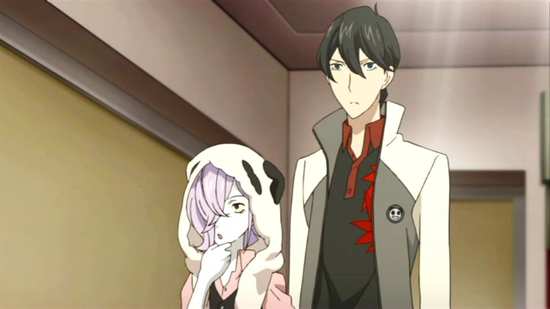
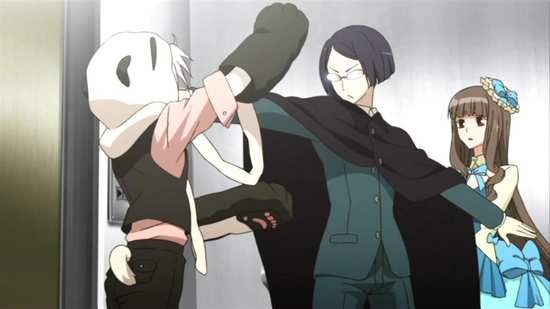
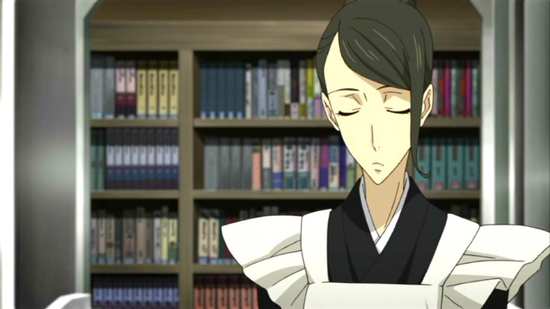
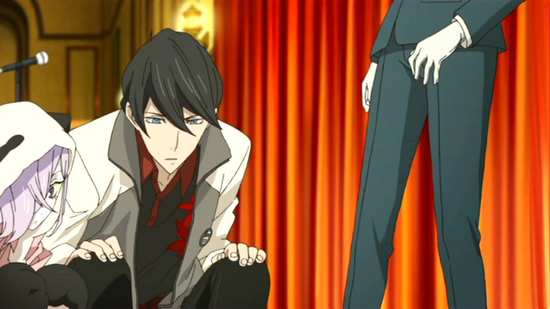
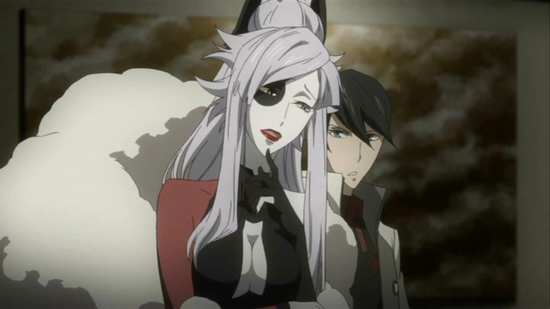
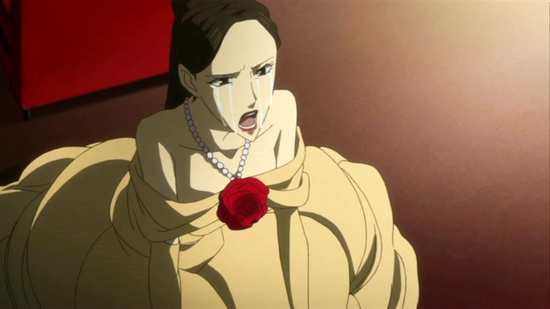
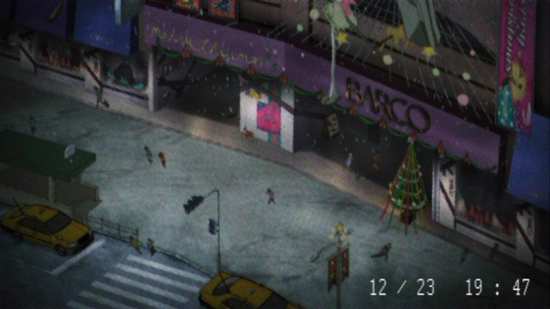
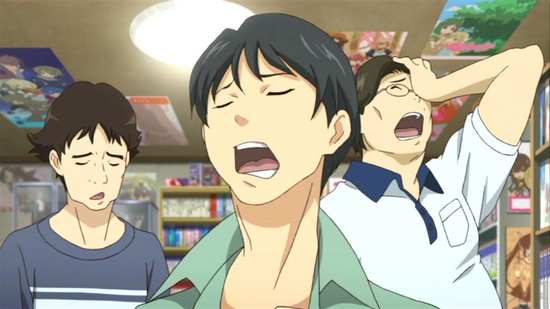
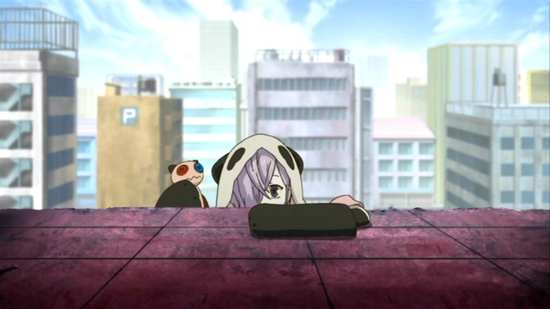
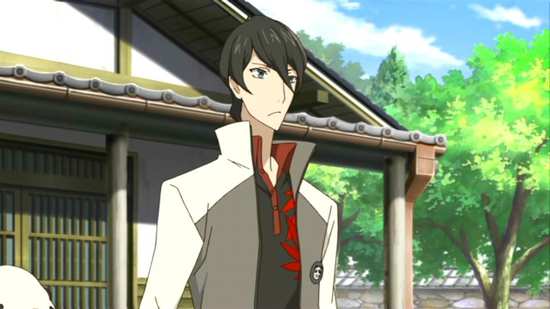
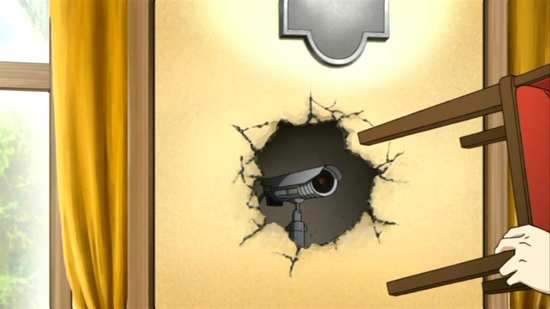
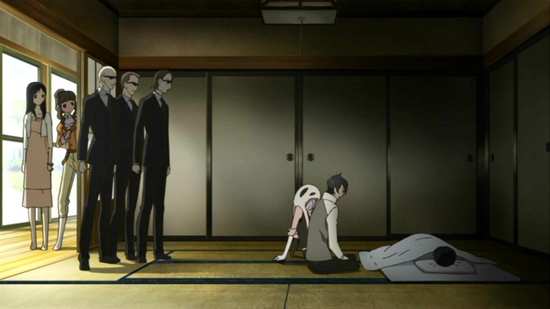
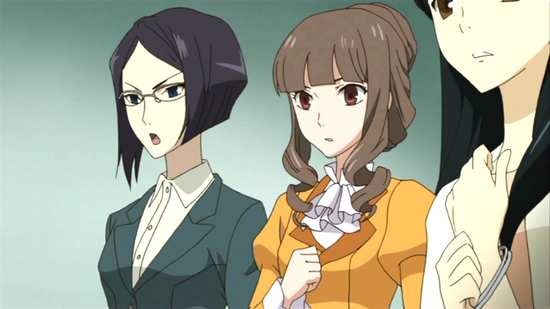
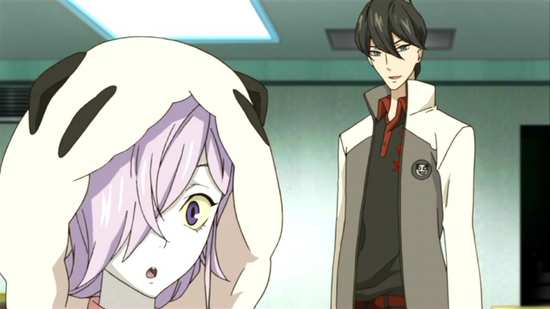
Your Opinions and Comments
Be the first to post a comment!